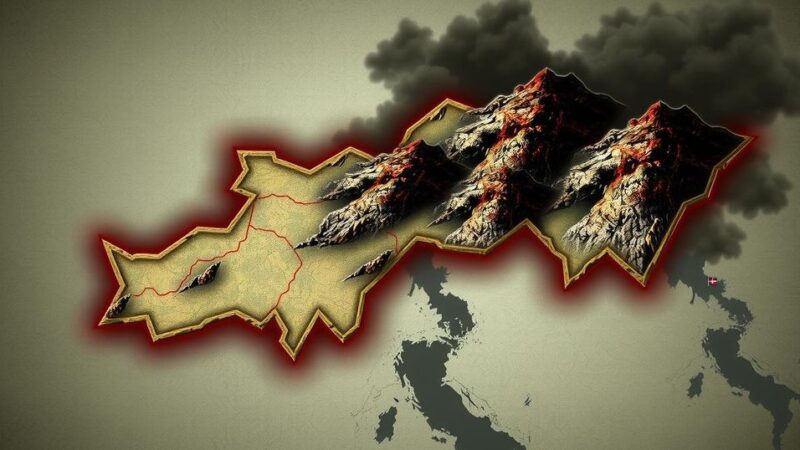Hurricane Oscar transformed from a tropical wave to a hurricane in less than 24 hours, catching predictive models off guard. Observers and reconnaissance flights enabled timely warnings as Oscar approached the Bahamas and Cuba, highlighting the challenges posed by small storm systems in meteorological forecasting.
On the evening of Friday, a tropical wave near Puerto Rico was assessed to have merely a 10% chance of strengthening. However, by Saturday lunchtime, this system had escalated into Category 1 Hurricane Oscar, poised to impact the Bahamas. The rapid transformation of this weather phenomenon caught many storm models off guard, yet human observation, pilots, and scientific reconnaissance succeeded in issuing timely warnings ahead of landfall. Philippe Papin, serving as the forecaster for the National Hurricane Center, identified developing circulation in the microwave satellite imagery early Saturday morning. “It became pretty clear that a small circulation was developing,” he stated, emphasizing the need for a swift adjustment in forecasts. Consequently, the hurricane center released its initial prediction for Tropical Storm Oscar by 11 a.m., prompting the Bahamas to issue a tropical storm warning. Simultaneously, Hurricane Hunters launched from St. Croix to gather real-time data. Within a brief period, they assessed conditions that contrasted sharply with earlier analyses. Papin noted that their plane did not register tropical-storm-force winds until it was merely 10 nautical miles from Oscar’s core. By 2 p.m., the system was classified as Hurricane Oscar, categorized as one of the smaller hurricanes in the Caribbean, thereby granting islands approximately 12 to 24 hours for preparations, a notably insufficient lead time. Hurricane Oscar made landfall on Great Inagua Island in the Bahamas on Sunday morning and proceeded to impact the eastern coast of Cuba that evening. The trajectory of this system commenced over a week prior, departing the African coast, where initial computer models indicated a likelihood of forming a tropical depression. However, a surge of dry air seemingly hindered this development, leading the models to erroneously conclude that the system had dissipated. By Friday, predictive models failed to indicate any possibility of a tropical storm emerging in the immediate Caribbean or Atlantic regions for the following week. As Klotzbach, a senior research scientist, pointed out, “I think the models just had a hard time resolving the circulation before they got the recon in there. It’s not like the models didn’t have signals; they had them and then it killed them off.” The reconnaissance data fed into the models later demonstrated that, while Oscar possessed hurricane-force winds, they extended only five nautical miles from its center—a factor crucial to understanding the difficulties models encountered with small storms. Despite being categorized as a small storm, Hurricane Oscar’s radius was notably larger than that of several smaller hurricanes recorded since 2004. This highlights the inherent challenges in forecasting such compact systems, underscoring the unpredictable nature of tropical storm behavior. Overall, the occurrence highlights the significance of human intervention and observational data in forecasting, especially when models fail to predict rapid intensifications of storms effectively.
The article discusses the unexpected development of Hurricane Oscar, which intensified from a loose tropical wave into a hurricane in a remarkably short time frame, demonstrating the limitations of computer meteorological models in accurately forecasting such rapid changes in storm systems. It showcases the crucial role that human observation and reconnaissance play in supplementing computer projections, particularly under circumstances involving atypical storm formations.
In summary, Hurricane Oscar serves as a poignant reminder of the complexities involved in hurricane forecasting. While models initially failed to predict its escalation due to its small size and rapid development, keen observations from meteorologists and reconnaissance flights enabled timely warnings and response measures in affected areas. This incident underscores the need for continual refinement of forecasting methodologies and emphasizes the merits of human expertise alongside technological advancements in predicting weather phenomena.
Original Source: www.tampabay.com






